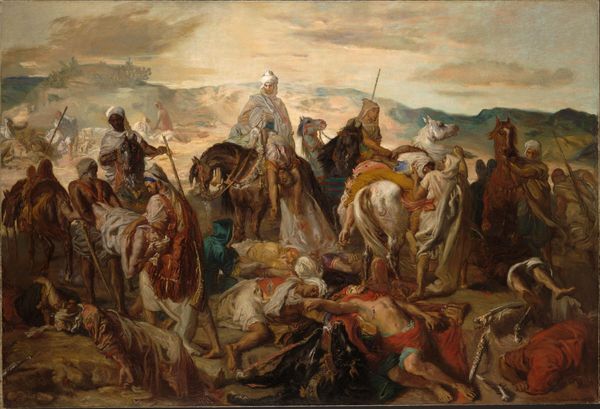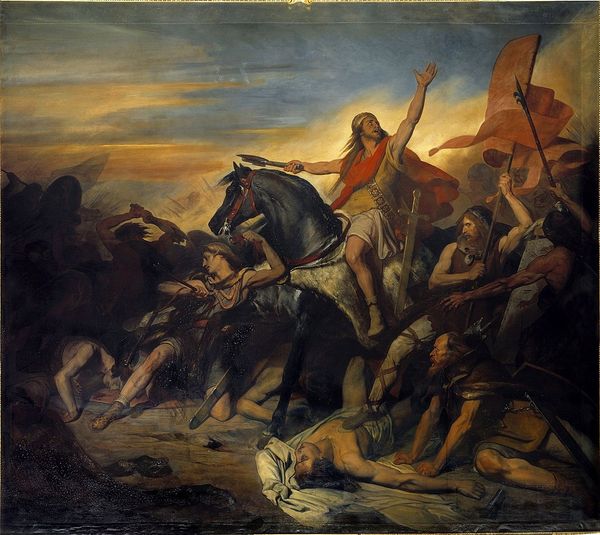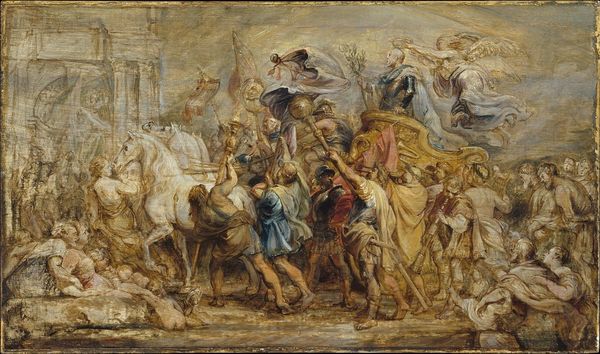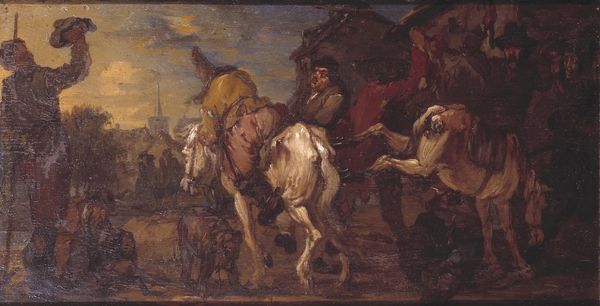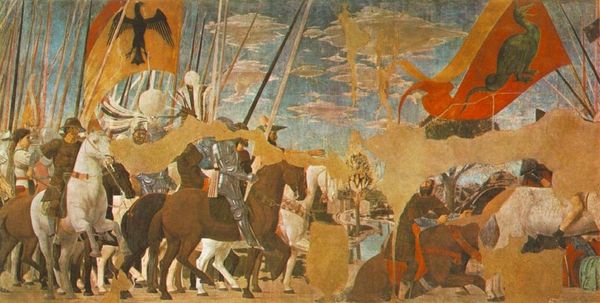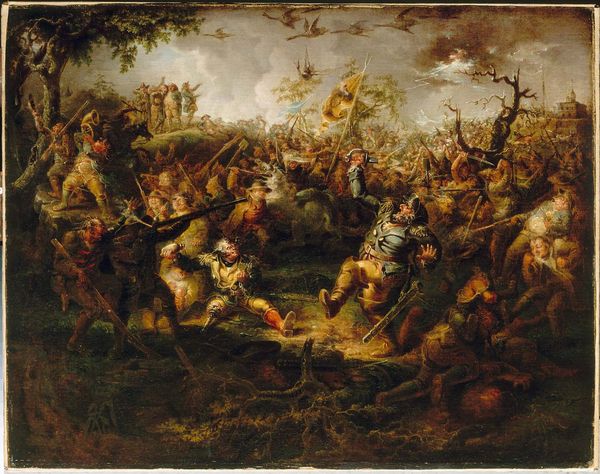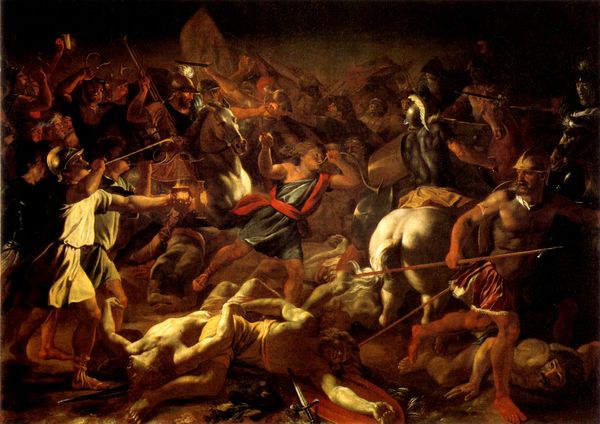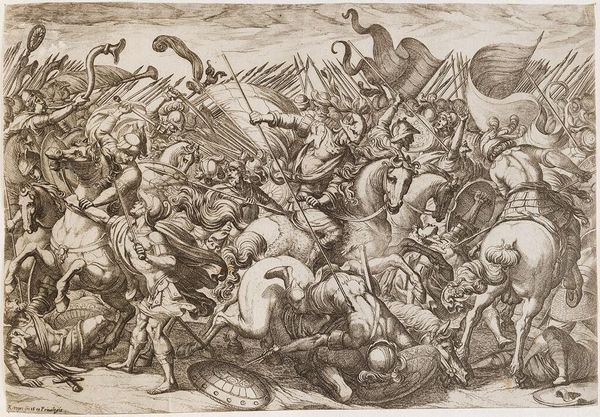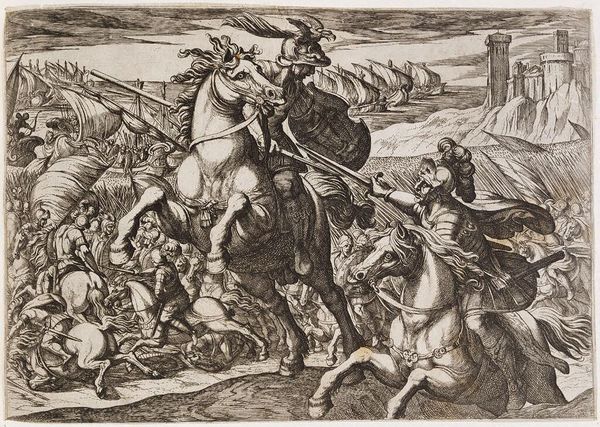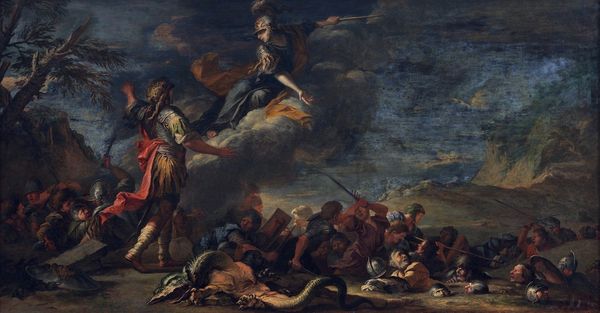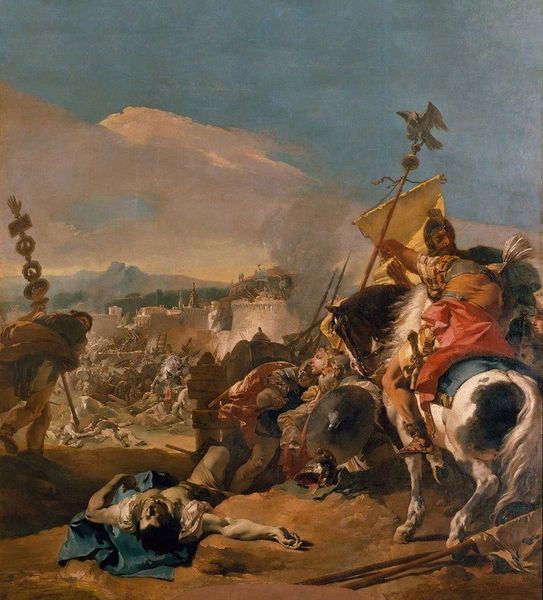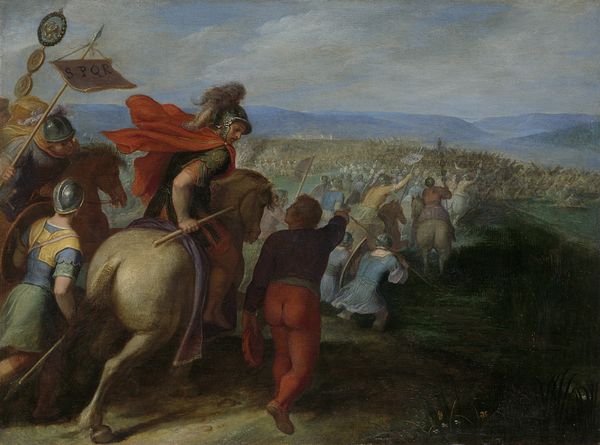
painting, oil-paint
#
figurative
#
baroque
#
painting
#
oil-paint
#
landscape
#
figuration
#
oil painting
#
history-painting
#
italian-renaissance
Copyright: Public Domain: Artvee
Curator: Rubens! Of course. Here we have “Triumphal Entry of Henri IV in Paris,” thought to have been completed somewhere between 1627 and 1630. Just bask in that Baroque opulence for a moment, will you? Editor: Whew! Basking feels right. Overwhelming. The way figures tumble over each other makes my stomach flip a little. What’s with all the chaos? Curator: Well, this is less a portrait of stark historical reality and more a masterfully constructed piece of…myth-making, shall we say? A calculated display of power. Editor: I see so much symbolism! The obvious: the laurel wreaths signifying victory. The figures pulling Henri's chariot forward—strength, power, momentum. But I also see potential vulnerability in the cherubic faces surrounding the king above. Is Rubens pointing to the burden of leadership, perhaps? Curator: A tempting read, isn't it? But maybe the artist is saying that even rulers rely on a complex system of support. Those cherubs are as much a part of the display of power as the muscle-bound guys at the front. All contributing to this idea of Henri's reign as divinely ordained. Editor: And what of the figures to the left? Languid, relaxed… they appear in stark contrast to the scene's vigorous procession. Are they meant to represent peace and prosperity ushered in by Henri IV? Curator: Precisely! Or at least the *idea* of peace and prosperity that Henri’s PR team was selling. They serve as the foundation for his triumph, but aren’t active participants, so to speak. Resting on the benefits of Henri’s triumph, both literally and figuratively. Editor: It's striking how effectively Rubens communicates layers of power dynamics in this single moment. Every element seems carefully staged to project authority. The figures beneath almost seem to serve as a plinth, emphasizing the spectacle and importance of Henri IV’s ascent. Curator: An excellent point. It’s all very intentional, down to the smallest cherub. Editor: Looking at it, it seems almost too grandiose to be real. This really pushes me to reflect on how historical events are framed to cultivate political narratives and manipulate perception. Curator: I see what you mean, yes. Propaganda served up with a generous dollop of artistry! Something to ponder.
Comments
No comments
Be the first to comment and join the conversation on the ultimate creative platform.
